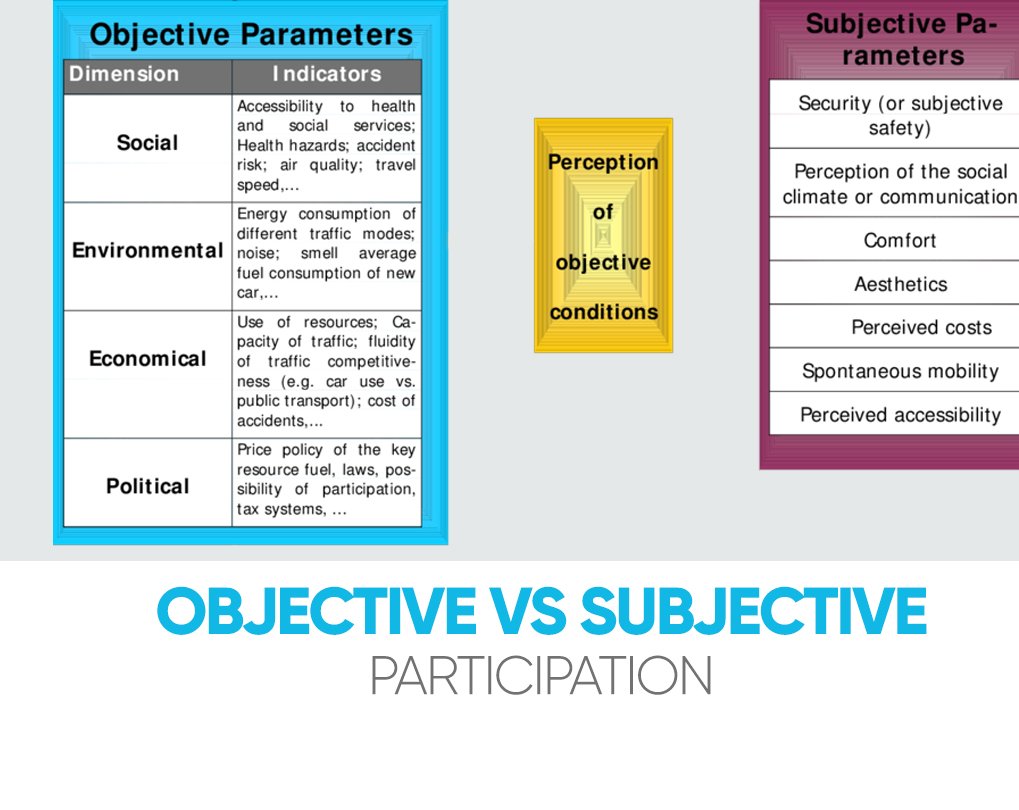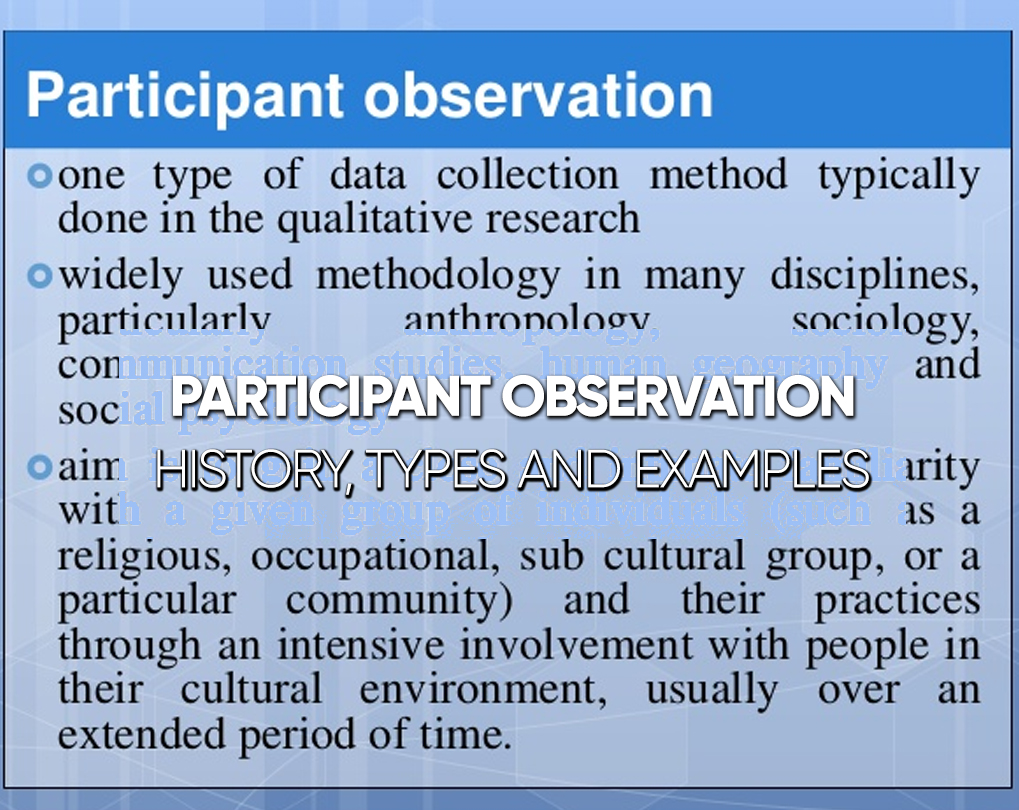Participant observation is a qualitative study scheme in which the researcher not only perceives the research associates but also actively involves in the activities of the research participants. This needs the researcher to enhance integration into the associates’ environment while also taking actual notes about what is going on. Most researchers who manage participant observations bear on the role that they are involved in studying. In Jill’s case, she might join in an original foreign language course, achieve all prescribed homework and classwork, and visit field trips just as any normal student enrolled in the class would. Jill would also have casual discussions with other students in the class and the teacher. Jill would hold a complete record of all homework and take detailed notes about what she recognizes and what appeared during her encounters with her classmates and teachers. Jill would also hold notes about technology regulation, classroom criteria and expectations, and any other message that she finds valuable.
There are 3 major pieces of participant observation:
- Gaining entrance into the area you wish to study
- Building affinity with the research participants under examination
- Originating assured you spend enough time with the research associates in the environment to get enough amount of data for your study

Objective vs Subjective Participation
Participant observation demands the researcher to be a subjective participant in the understanding that they use the information obtained through personal involvement with the research subjects to communicate with and gain further entrance to the group. This component provides a dimension of knowledge that is needing in survey data. This research also needs the researcher to propose to be an objective observer and record everything that he or she has observed, not letting emotions and sensations affect their views and findings.
However, most researchers acknowledge that genuine objectivity is an absolute, not an actuality, given that the way in which we perceive the world and people in it is continually shaped by our past happenings and our positionality in the social building relative to others. As such, a good associate spectator will also maintain a crucial self-reflexivity that enables her to understand the way she herself might influence the area of research and the data she gets.
Strengths and Weaknesses
The powers of participant observation combine the depth of learning that it permits the researcher to collect and the perspective of knowledge of social difficulties and phenomena created from the level of the everyday lives of those undergoing them. Many think this an egalitarian research process because it focuses on the experiences, viewpoints, and knowledge of those examined. This type of analysis has been the root of some of the most striking and worthy thoughts in sociology.
Some shortcomings or faults of this method are that it is very time-exhausting, with researchers giving months or years being in the place of study. Because of this, participant research can generate a vast quantity of data that might be baffling to search through and analyze. And, researchers must be cautious to endure somewhat separated as observers, particularly as time drags and they become an admitted part of the group, assuming its habits, ways of life, and viewpoints. Inquiries about objectivity and values were proposed about sociologist Alice Goffman’s research methods because some performed passages from her book “On the Run” as an acceptance of engagement in a murder intrigue.
Students yearning to manage participant observation research should discuss 2 excellent books on the subject: “Analyzing Social Settings”, by Lofland and Lofland and “Writing Ethnographic Field notes” by Emerson.
Participant Observation method History
Participant observation is deemed a staple in anthropological thoughts, particularly in ethnographic studies, and has been used as a data acquisition method for over a centenary. As DeWALT (2002) recites it, one of the first examples of its use associated the work of Frank Hamilton CUSHING, who 4 and a half years as an associate-observer with the Zuni Pueblo people around 1879 in research for the Smithsonian Institution’s Bureau of Ethnology. While this time, Cushing studied the language, participated in the systems, was chosen by a Pueblo, and was admitted into the ministry. Because he didn’t distribute broadly about this raising, he was scrutinized as having gone natural, indicating that he had wasted his objectivity and, therefore, his strength to write analytically about the art.
My personal practice accompanying research in domestic inhabitants, which sprang about 10 years ago with my private ethnographic doctoral treatise on Muscogee (Creek) women’s attention of work (KAWULICH, 1998) and has resided in the years since (i.e., KAWULICH, 2004), drives me to believe that, while this may have been the case, it is also presumable that he kept the Zuni people in such great appreciation that he felt it unwise or irreverent to do so. In my personal research, I have been reluctant to write about spiritual celebrations or other phases of indigenous culture that I have recognized, for instance, for worry of relating knowledge that my participants or other association members might feel should not be distributed.
When I first started attending my ethnographic study of the Muscogee tending, I was made conscious of various incidents in which researchers were observed to have taken the knowledge they had obtained through interviews or notes and had issued their findings without consent of the Creek people or done so without providing peculiar credit to the participants who had yielded their lives with the researchers.
FAQs
[wps_faq style=”classic” question=”Q: What are participant observation examples?”]A: These are the kinds of readings that probably come to brain when you believe about anthropology or sociology – for instance, an anthropologist agrees to live with a family in the Amazon rainforest or a sociologist goes into a roofing project to discover about hunger. These are participant observation education.[/wps_faq][wps_faq style=”classic” question=”Q: Which are the properties of participant observation?”]A: Participant observation needs the researcher to be a biased participant in the feeling that they use the expertise gained through intimate involvement with the research subjects to communicate with and obtain further entrance to the group. This segment provides a dimension of data that is lacking in poll data.[/wps_faq][wps_faq style=”classic” question=”Q: What is an observation with an instance?”]A: The meaning of observation is the act of marking something or a judgment or assumption from something seen or encountered. An instance of observation is the seeing of Haley’s Comet. An instance of observation is gaining the statement that a tutor is proficient in watching him teach many times.[/wps_faq]
Conclusion
A design for teachers and social practitioners. In this essay, we explore the nature of participant observation, the different social roles that researchers can take, and some typical difficulties of participant observation – notably around questions of access and integrity.


